An underwater scooter transforms your diving adventures by letting you cover more distance while using less energy. Whether you're a professional diver, an underwater photographer, or someone who loves exploring marine environments, these devices add a new dimension to your underwater activities. This guide will show you how to safely operate and maintain your underwater scooter, from basic controls to advanced maneuvers, so you can make the most of your time beneath the surface.

Preparing Your Underwater Scooter
A well-prepared underwater scooter ensures both safety and enjoyment during your dive. Taking time for proper preparation prevents most common problems and emergencies underwater.
Learning Your Device's Features
Your underwater scooter has specific features you must know well. The maximum depth rating tells you your safe diving limits, while runtime shows how long you can stay underwater. Each model has different speed settings that affect your travel range.
Weight and buoyancy affect your scooter's performance in water. Most models maintain neutral or slightly negative buoyancy to prevent drifting. Your control panel houses the power switch, speed controls, battery indicator, and depth gauge. Learn where each control is and practice reaching them while wearing gloves.
Operating limits keep you safe. Know your scooter's maximum depth, battery life at different speeds, safe temperature range, and how much weight it can carry.
Safety Checklist
Proper safety measures make the difference between a smooth dive and a risky situation. Every safe dive starts with thorough preparation.
Essential safety steps include:
- Read and understand your scooter's user manual completely
- Check all diving gear and emergency signals
- Ensure batteries are fully charged
- Verify proper operation of all controls
- Check current weather and water conditions
- Set up a reliable buddy system
Before entering water, confirm:
- Your buddy knows the scooter's controls
- Both divers understand emergency procedures
- Dive plan is clear (route and time limits)
- All equipment has been cross-checked
- Weather conditions remain suitable
- Emergency signals are working properly
Regular safety checks prevent most diving problems. A thorough review of these points before each dive keeps you and your buddy safe underwater.

Underwater Scooter Control: Entry-Level Skills
The first skills you learn with an underwater scooter build the foundation for safe diving. These basic techniques ensure proper control and smooth water entry.
Device Power-Up and Grip
Your first task is proper scooter activation. Hold the power button for three seconds while keeping the propeller above water. Wait for the battery indicator light to confirm full activation.
Grip the handles like you would hold bicycle handlebars:
- Keep thumbs on the speed controls
- Maintain a firm but relaxed hold
- Position fingers around the grips, not on moving parts
Body Position and Control
Your position on the scooter affects both safety and efficiency:
- Center your chest over the main unit
- Keep your body horizontal, slightly above the scooter
- Tuck your legs behind the propeller zone
- Maintain bent elbows for better steering
Speed Control and Movement
Start with low speeds until handling becomes natural:
- Begin at the lowest speed setting
- Increase speed gradually using gentle pressure
- Stay alert to battery consumption at different speeds
- Practice stopping and starting in open water
Water Entry Methods
Choose your entry method based on your location:
Shore Entry:
- Carry the scooter in front of you, propeller facing forward
- Walk backward into the water until chest deep
- Point the scooter parallel to shore before starting
Boat Entry:
- Pass the scooter down first using a secure line
- Enter the water following normal dive procedures
- Move away from the boat before powering up
Always perform a final buoyancy check after entry. Adjust your position and weight until you achieve neutral buoyancy with your scooter.
Underwater Scooter Operation: Essential Skills
Moving from basic control to active diving requires mastering key maneuvers and safety procedures. These skills help you handle your scooter confidently in different situations.
Straight-Line Navigation
Maintaining a steady course needs proper technique:
- Align your body and scooter in the desired direction
- Keep both arms equally tensioned
- Look ahead, not down at the scooter
- Maintain constant speed for better control
Turning and Steering
Master these turning techniques:
- Wide turns: Lean slightly in the desired direction
- Sharp turns: Reduce speed before turning
- Banking: Tilt the scooter while maintaining body position
- Emergency turns: Quick speed reduction with controlled lean
Depth Management
Control your depth with precision:
- Point the nose slightly up or down for gradual changes
- Monitor your depth gauge constantly
- Adjust speed when changing depth
- Maintain neutral buoyancy throughout
Emergency Procedures
Safety depends on quick, correct responses:
- Emergency Stop: Release throttle and press the kill switch
- Quick Release: Push the emergency release lever forward
- Surface Protocol: Ascend slowly at a 45-degree angle
- Air Management: Check gauges every two minutes
Safety Monitoring
Keep track of these crucial factors:
- Battery level indicator
- Current depth versus planned depth
- Air supply in main and backup tanks
- Time at depth and surface intervals
- Distance from your entry point
Clear signals to your diving buddy before each major maneuver enhance safety. Regular practice in controlled conditions builds confidence for open-water diving.

How to Operate Your Underwater Scooter in Different Environments
Each diving environment demands specific techniques and precautions for safe scooter operation. Water conditions directly affect your device's performance and your diving approach.
Water Currents
Strong Flows
Face into the current when starting your scooter. Strong flows require higher power settings, which drain batteries faster. Stay close to the bottom where currents are typically weaker, and always plan extra battery power for fighting unexpected currents.
Visibility Standards
Safe operation requires at least 10 feet (3 meters) of visibility. In murky conditions, reduce your speed and maintain closer contact with your diving buddy. Use auxiliary lights when visibility drops, and avoid areas with heavy sediment.
Temperature Impact on Performance
Cold Water Operations
Battery efficiency decreases in cold water. Your scooter may show reduced runtime and power output. Plan shorter dives in cold conditions and monitor battery levels more frequently.
Warm Water Adjustments
Warmer waters require more attention to motor temperature. Allow cooling periods during long dives, and watch for any signs of overheating in tropical conditions.
Diving Locations and Special Requirements
Coastal Water
Coastal diving requires attention to tide schedules and changing currents. Keep clear of surf zones and monitor weather conditions throughout your dive. Strong offshore currents can develop quickly, so maintain awareness of your position relative to shore.
Lake and Inland
Lakes present unique challenges like variable depths and underwater obstacles. Survey entry and exit points carefully. Maintain safe distances from dams and water intakes. Changes in water levels can create unexpected shallow areas.
Reef Areas
Reef environments demand careful navigation. Operate at reduced speeds near coral formations and maintain proper distance from marine life. Follow local regulations about protected areas and use only designated entry points.
Pool Training
Pool practice sessions help build skills in a controlled environment. Maintain slow speeds and keep clear of walls and other swimmers. Most facilities have specific guidelines for powered equipment – review these before training.

Common Challenges and Solutions About Underwater Scooters
Technical problems can arise during any dive. Knowing how to identify and address these issues ensures your safety and extends your scooter's life.
Battery-Related Problems
Power Loss Signs
Sudden speed reduction or inconsistent power output often indicates battery problems. Watch for flickering battery indicators and reduced thrust. Switch to your backup power system if available, and begin a controlled ascent.
Battery Life Extension
Cold temperatures and high speeds drain batteries faster. Maintain moderate speeds when possible, and keep backup power for emergencies. Proper battery storage between dives prevents premature capacity loss.
Mechanical Malfunctions
Motor Issues
Unusual sounds or vibrations signal potential motor problems. Immediately stop using the scooter if you notice grinding noises or irregular operation. A properly maintained motor rarely fails during dives.
Control System Problems
Stuck controls or unresponsive buttons need immediate attention. Release the throttle and use the emergency shut-off if controls malfunction. Regular pre-dive checks help prevent most control issues.
Navigation Difficulties
Loss of Direction
Strong currents or poor visibility can disorient divers. Use your compass and natural navigation markers as backup references. Stay close to your planned route and maintain contact with your diving buddy.
Depth Control Problems
Equipment issues might affect depth maintenance. If your scooter pulls up or down unexpectedly, release the controls and adjust your buoyancy manually. Return to normal swimming position if depth control becomes unreliable.
Emergency Response
Quick Release Activation
Equipment entanglement requires fast action. Pull the quick release mechanism firmly and move clear of the scooter. Practice this release technique regularly in safe conditions.
Emergency Ascent
Power loss at depth requires calm response. Switch to normal swimming and follow standard emergency ascent procedures. Signal your buddy and maintain proper ascent rates without the scooter.
Surface Protocol
Equipment problems at the surface need different responses. Stay with your scooter if possible, but release it if it creates a hazard. Use your surface signaling device to alert nearby boats or your support team.
Take Your First Dive With an Underwater Scooter!
Well-operated underwater scooters make diving safer and more enjoyable. By following proper preparation steps, mastering basic controls, and understanding different water conditions, you'll be ready to handle your device confidently. Regular practice and proper maintenance will keep you and your scooter safe for many successful dives ahead.

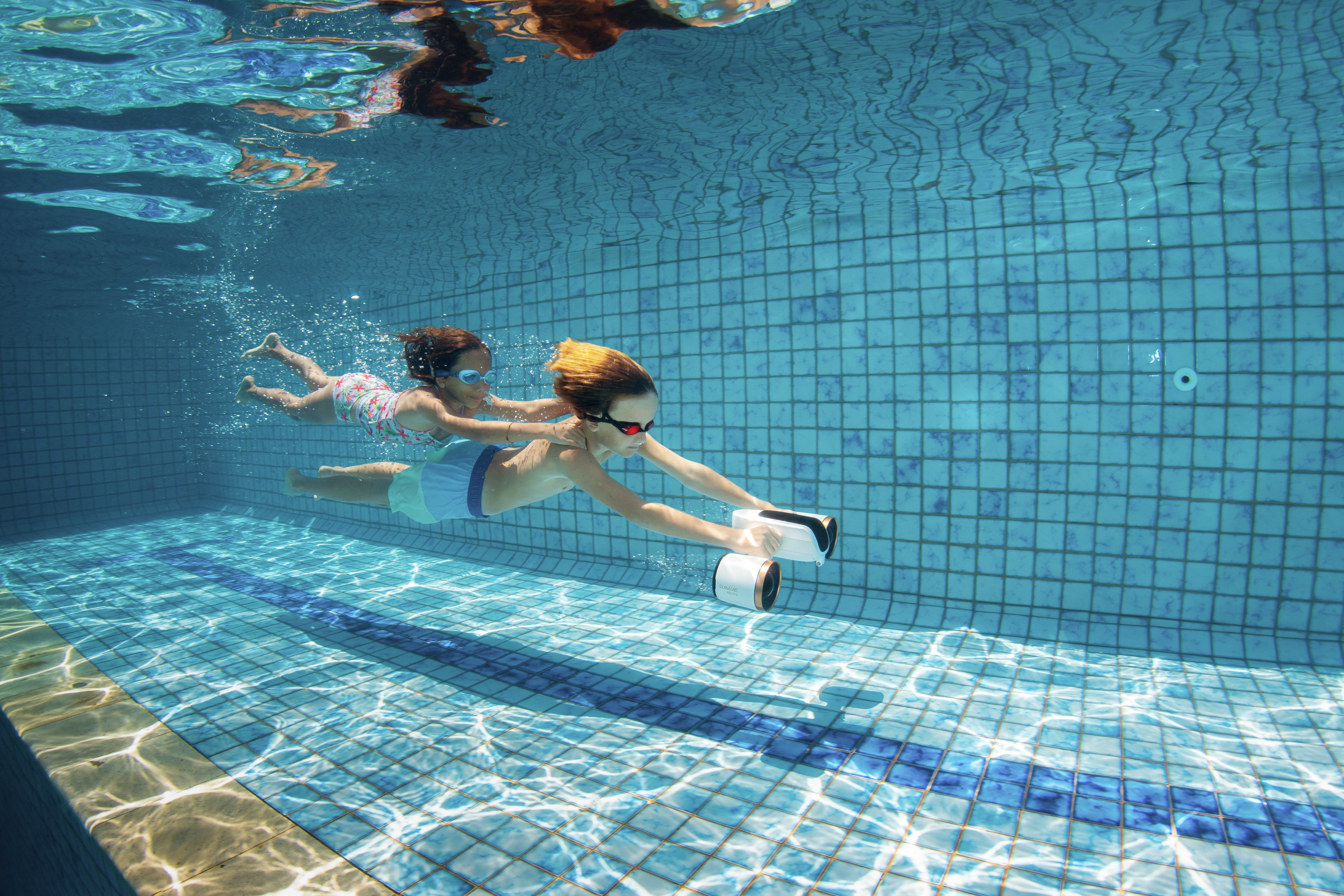
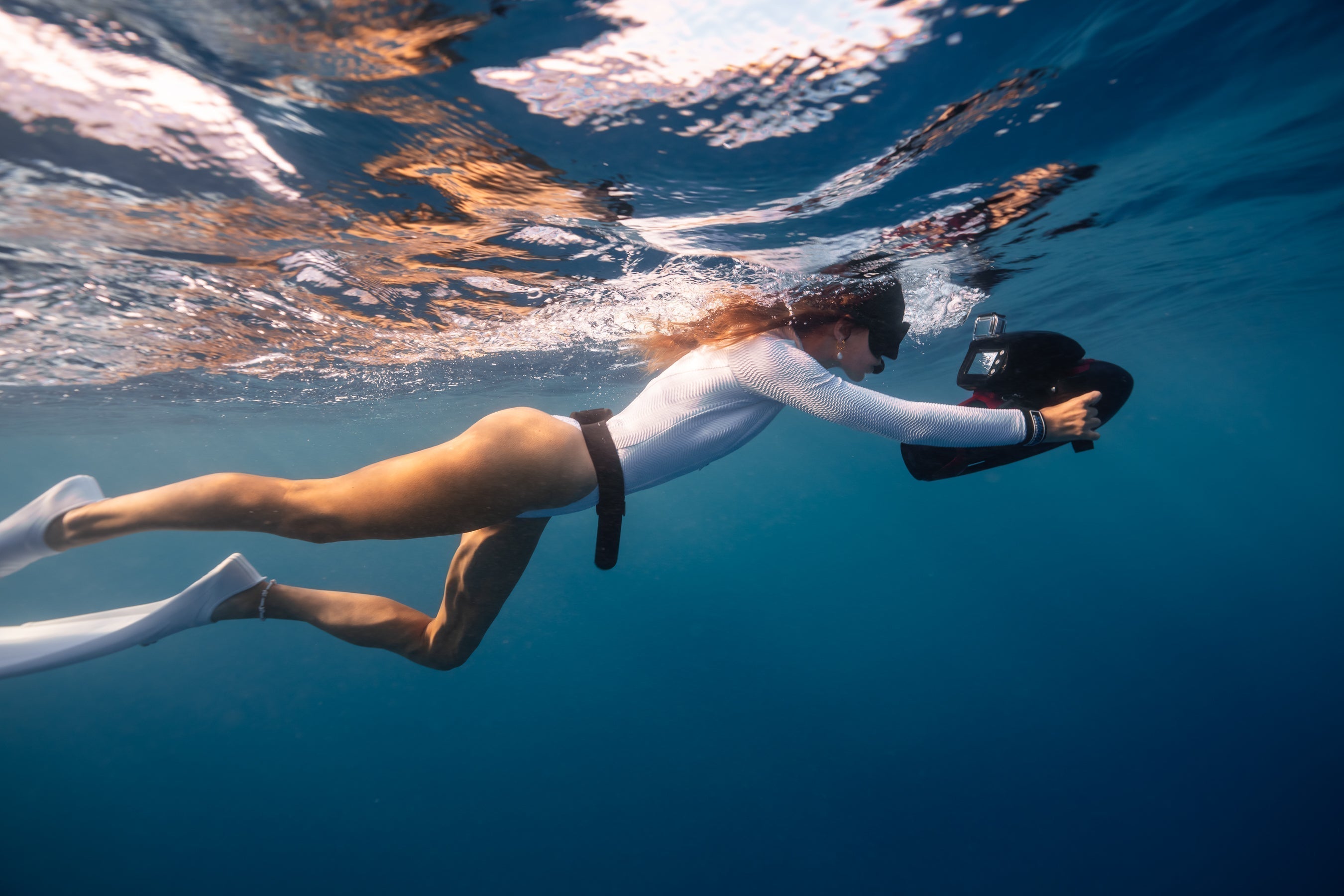


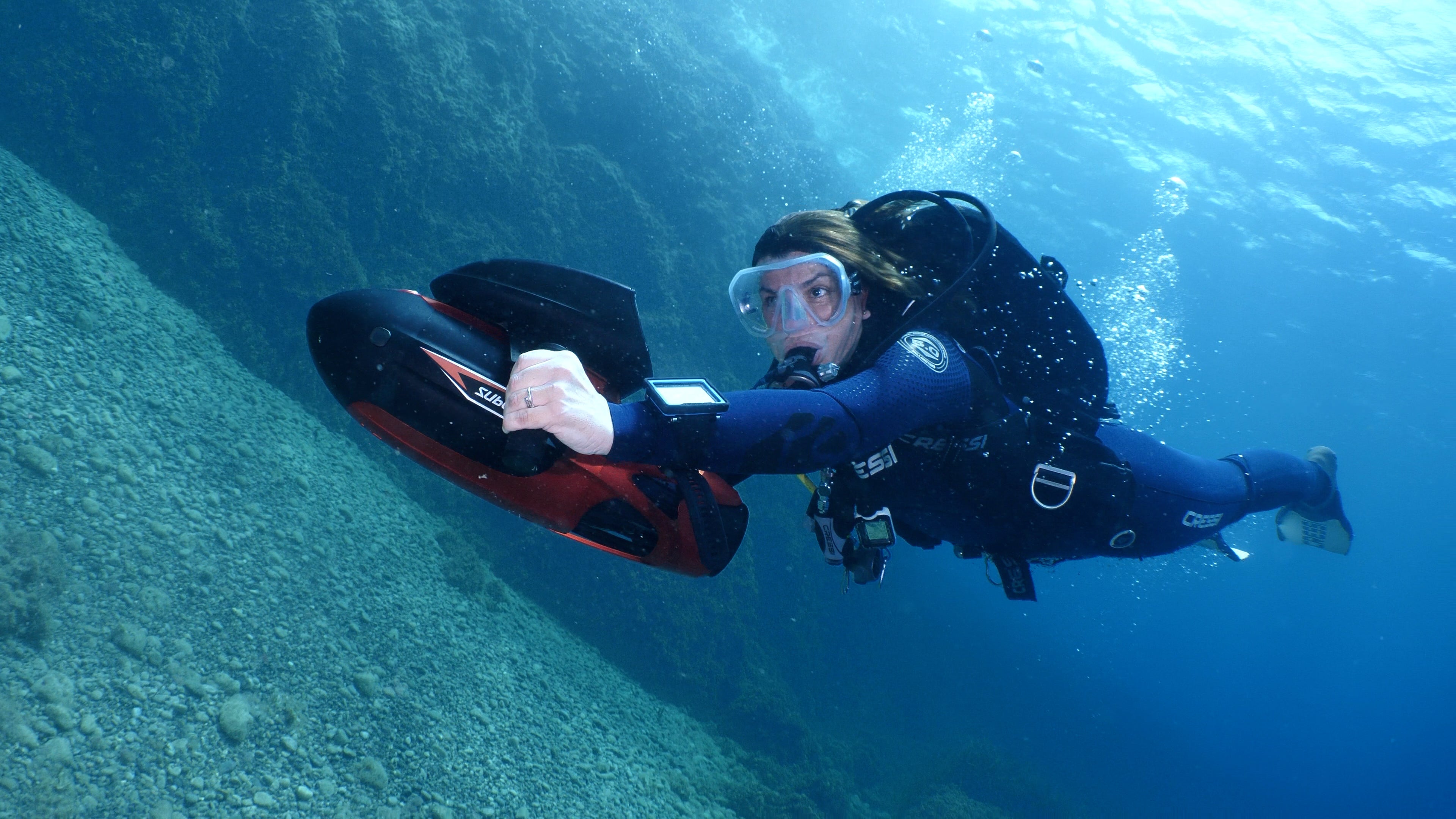
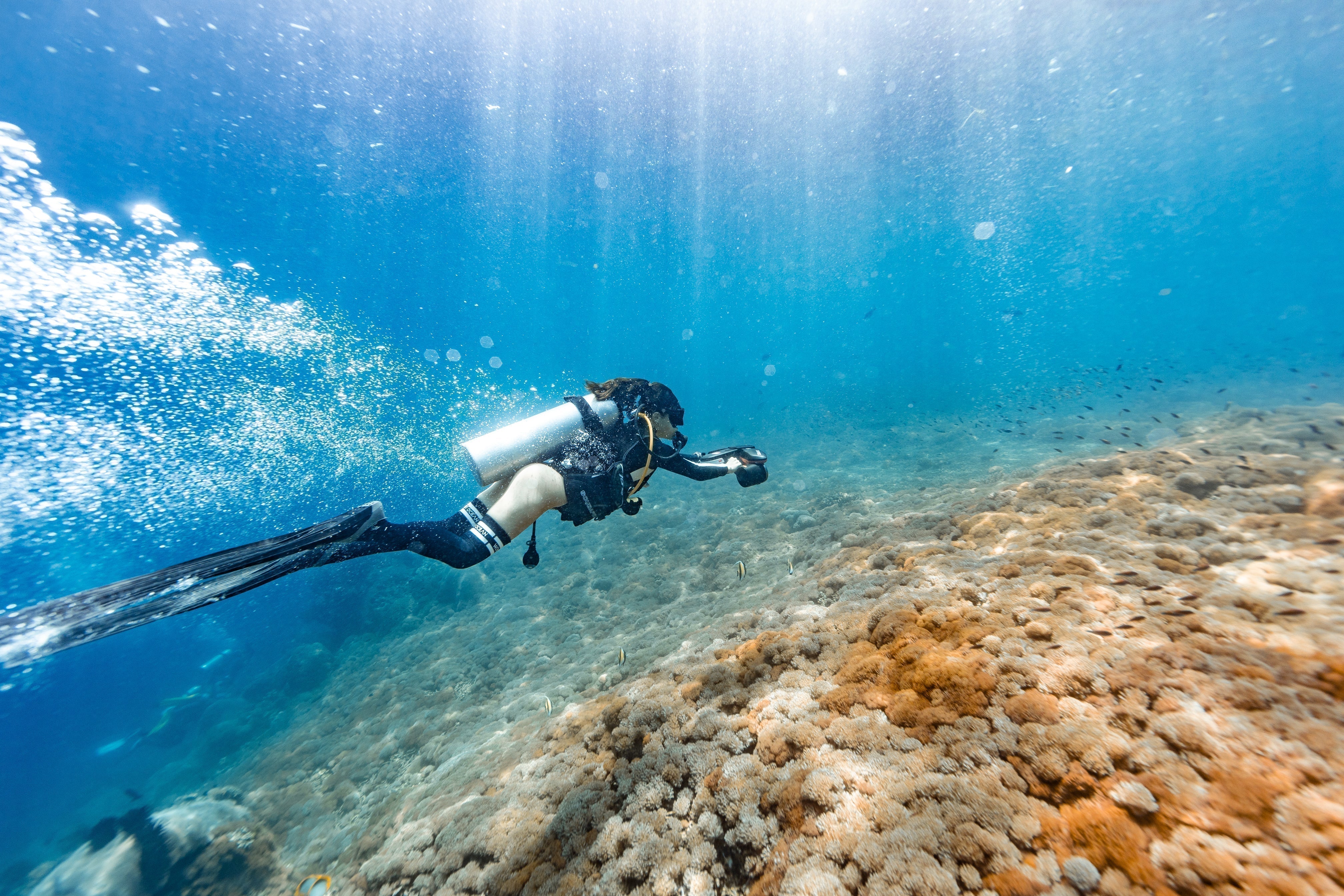
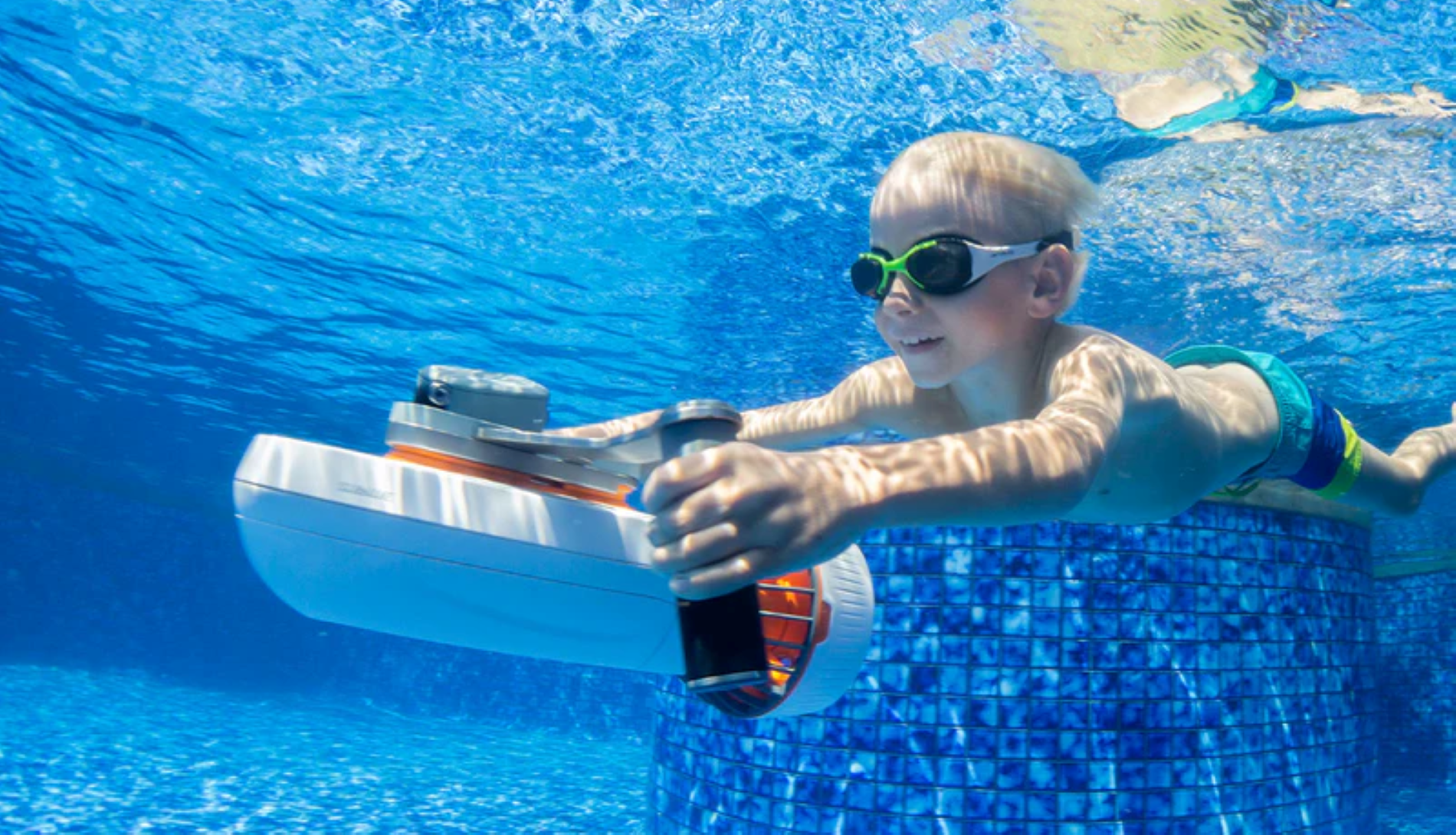
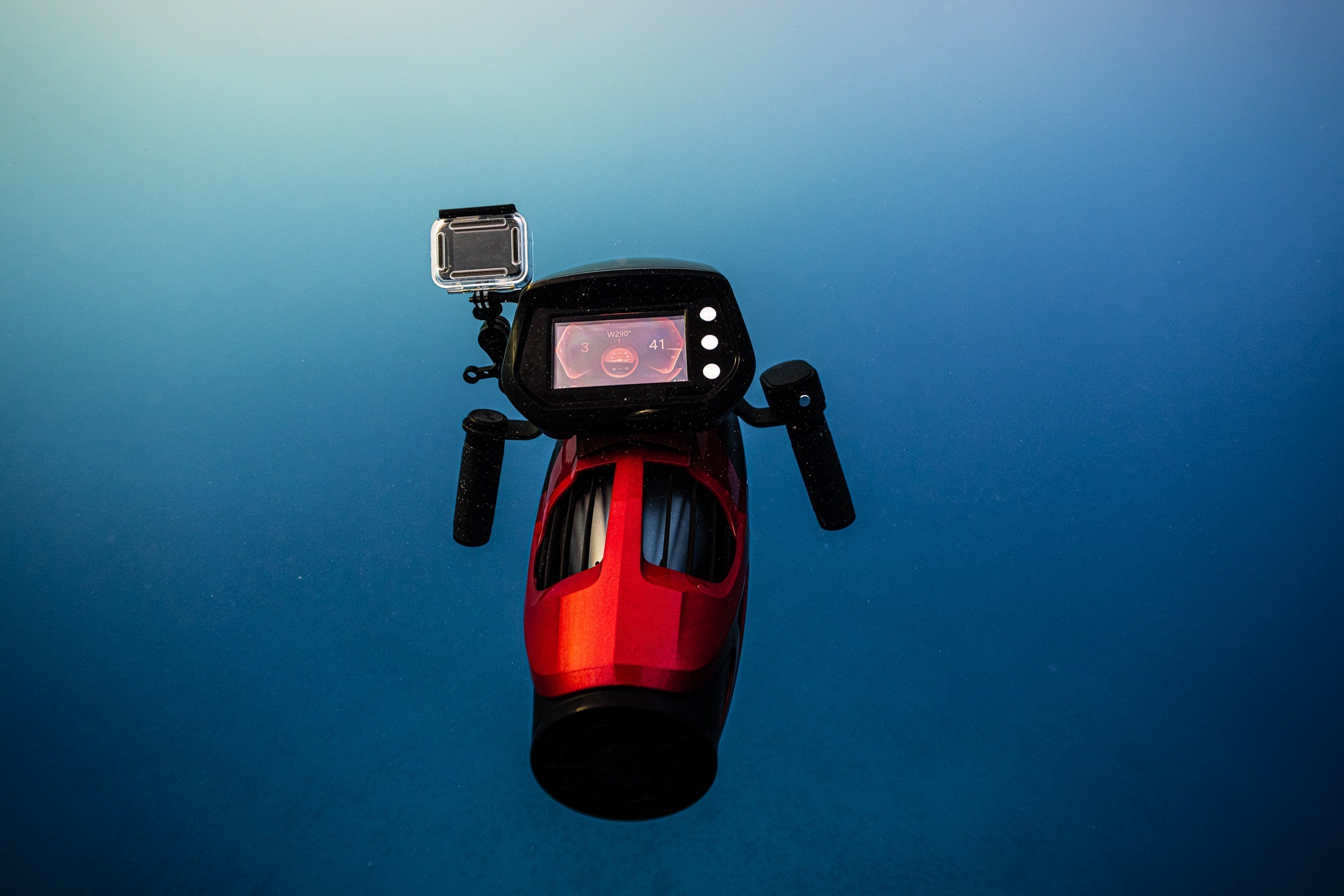
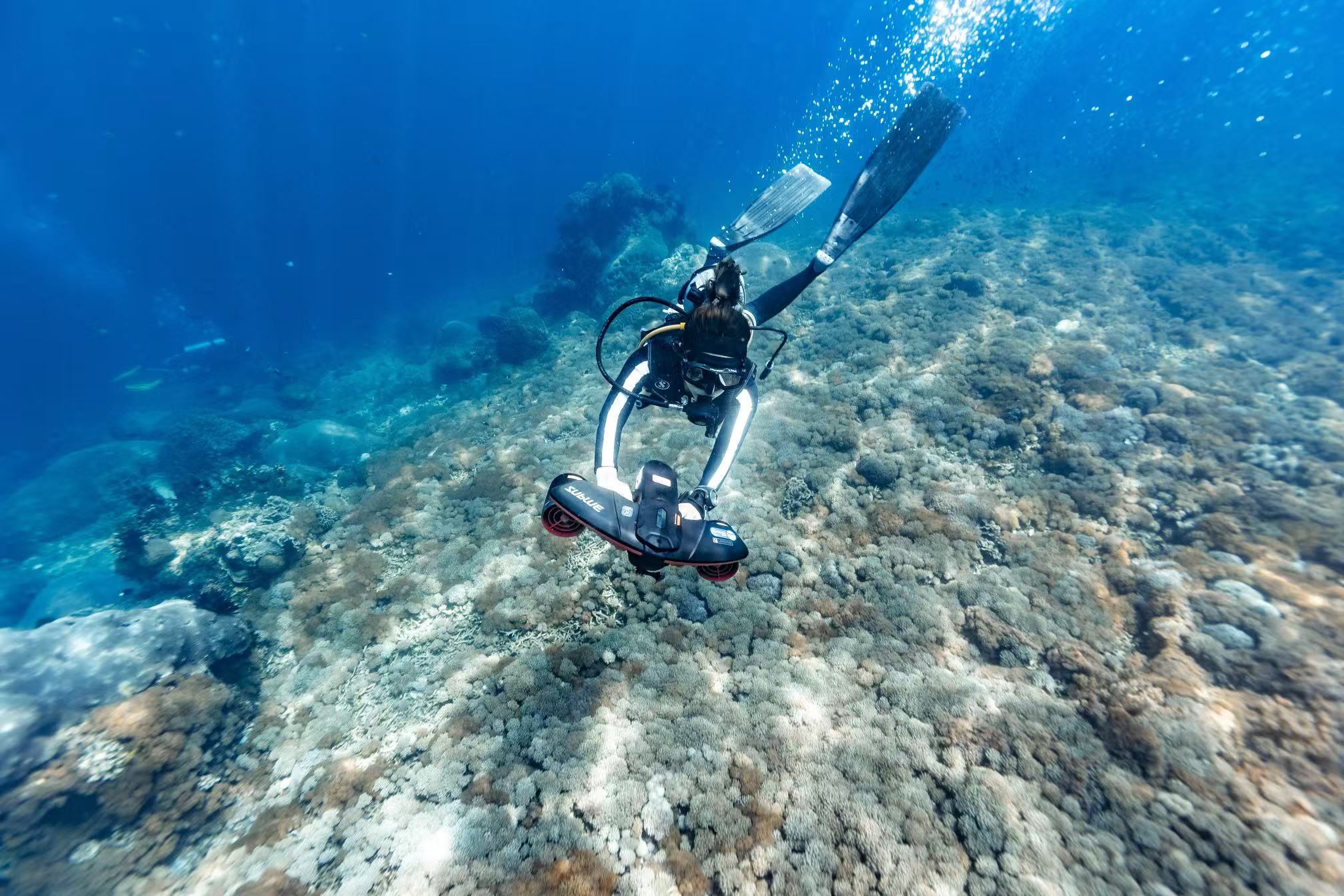
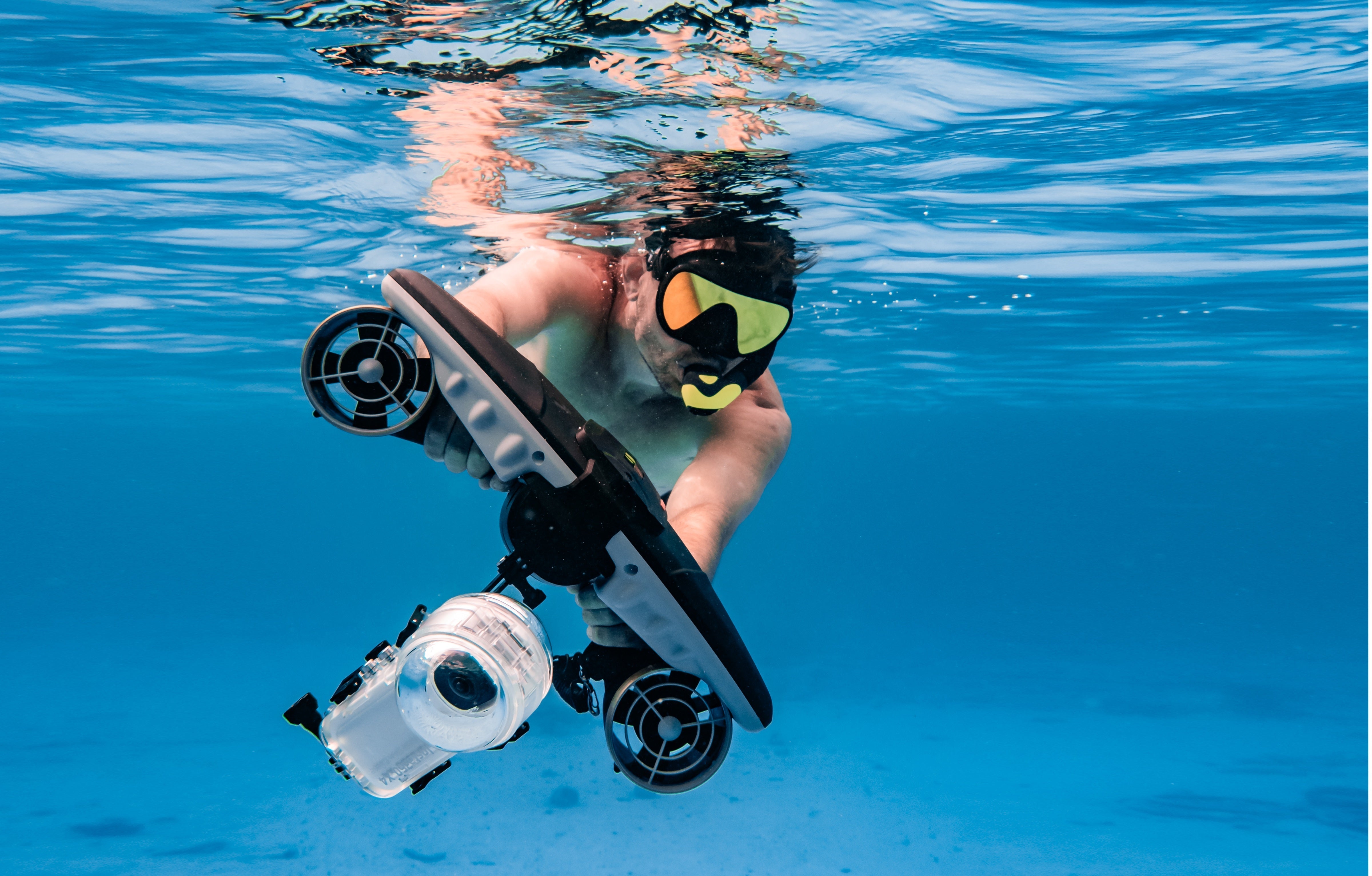
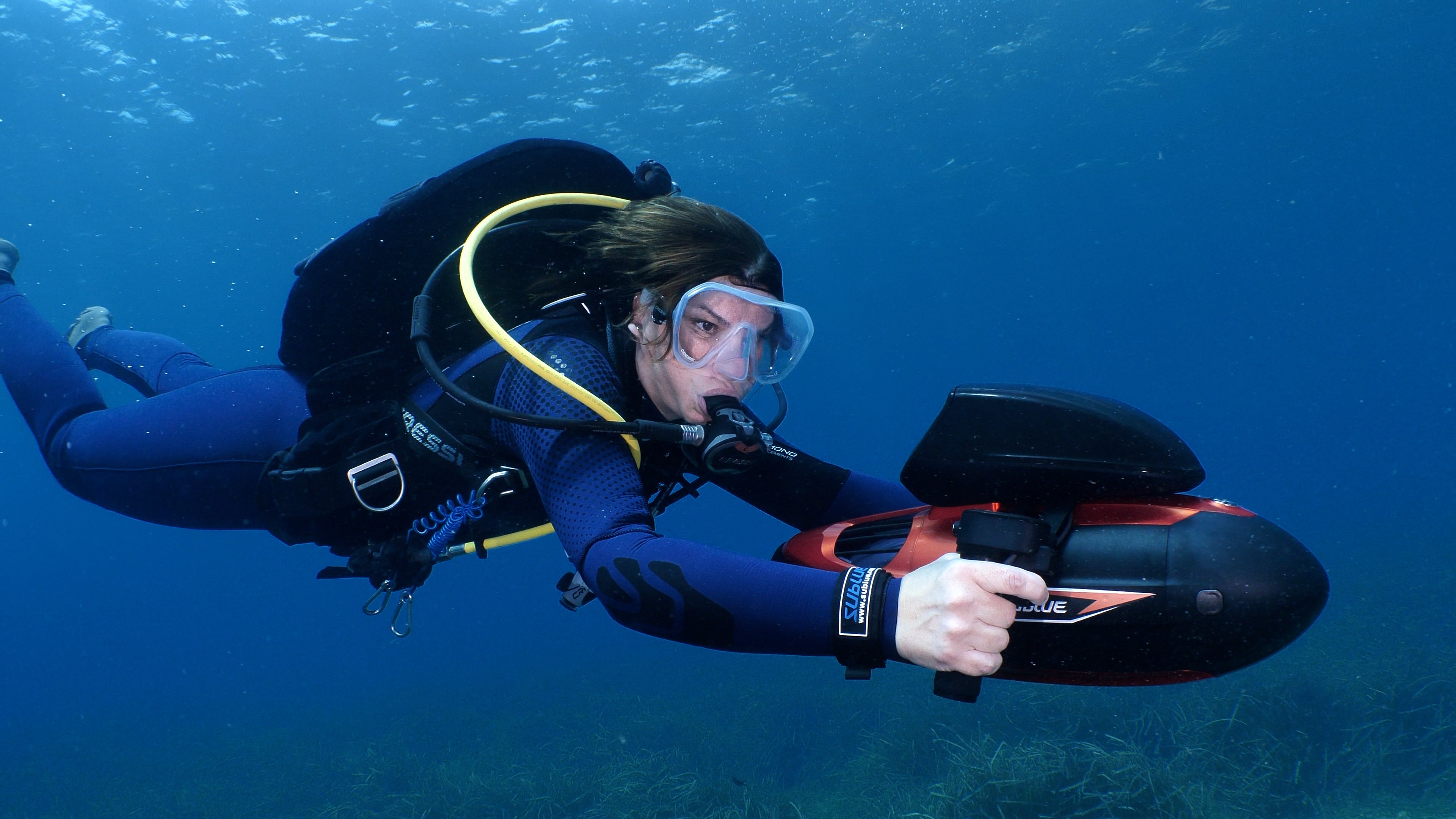
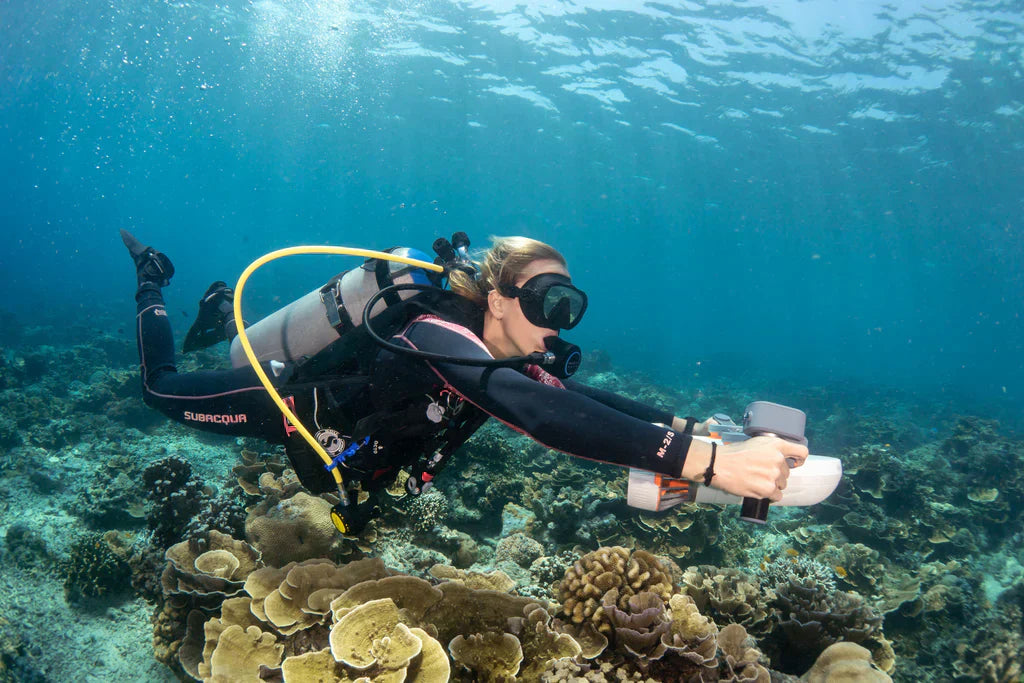
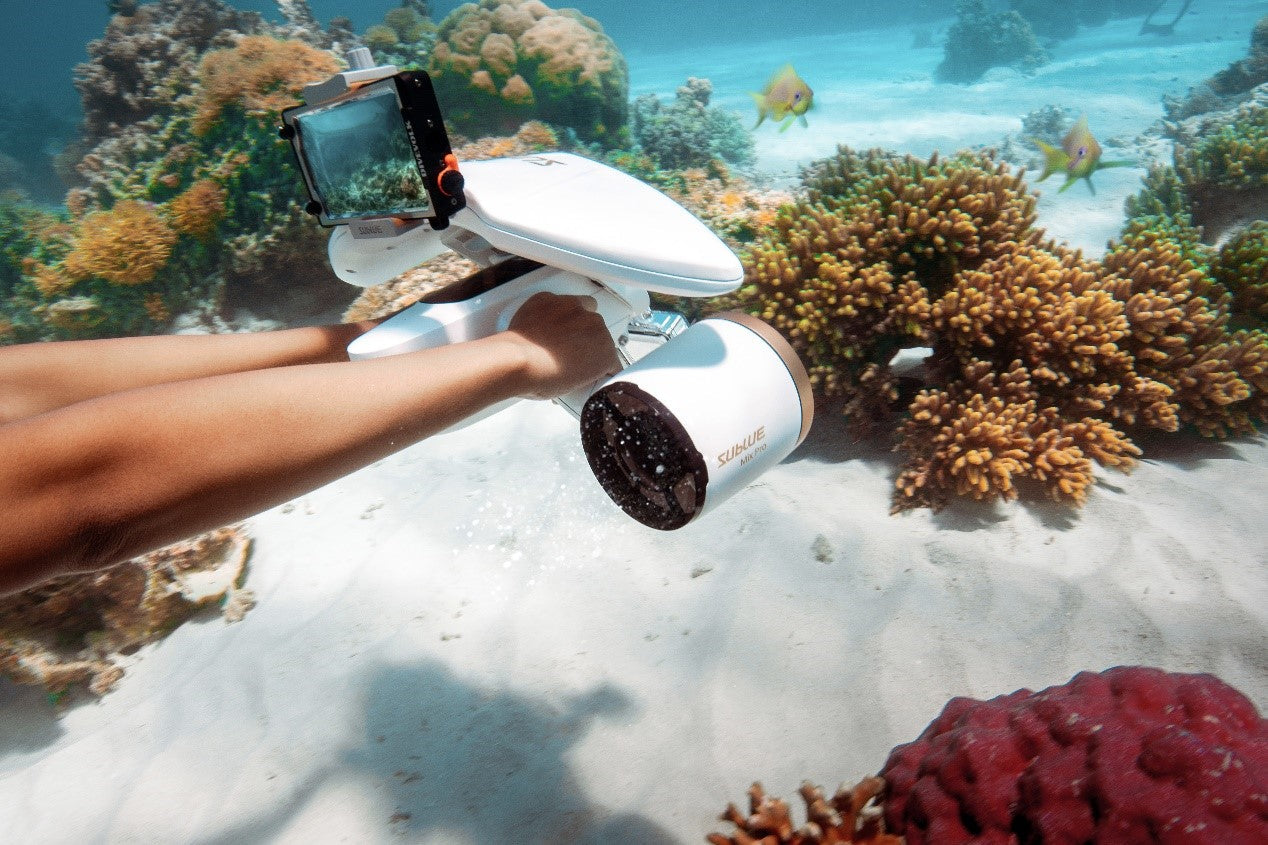
Share:
How Fast Does an Underwater Scooter Go?
What Is the Battery Life of the Underwater Scooter